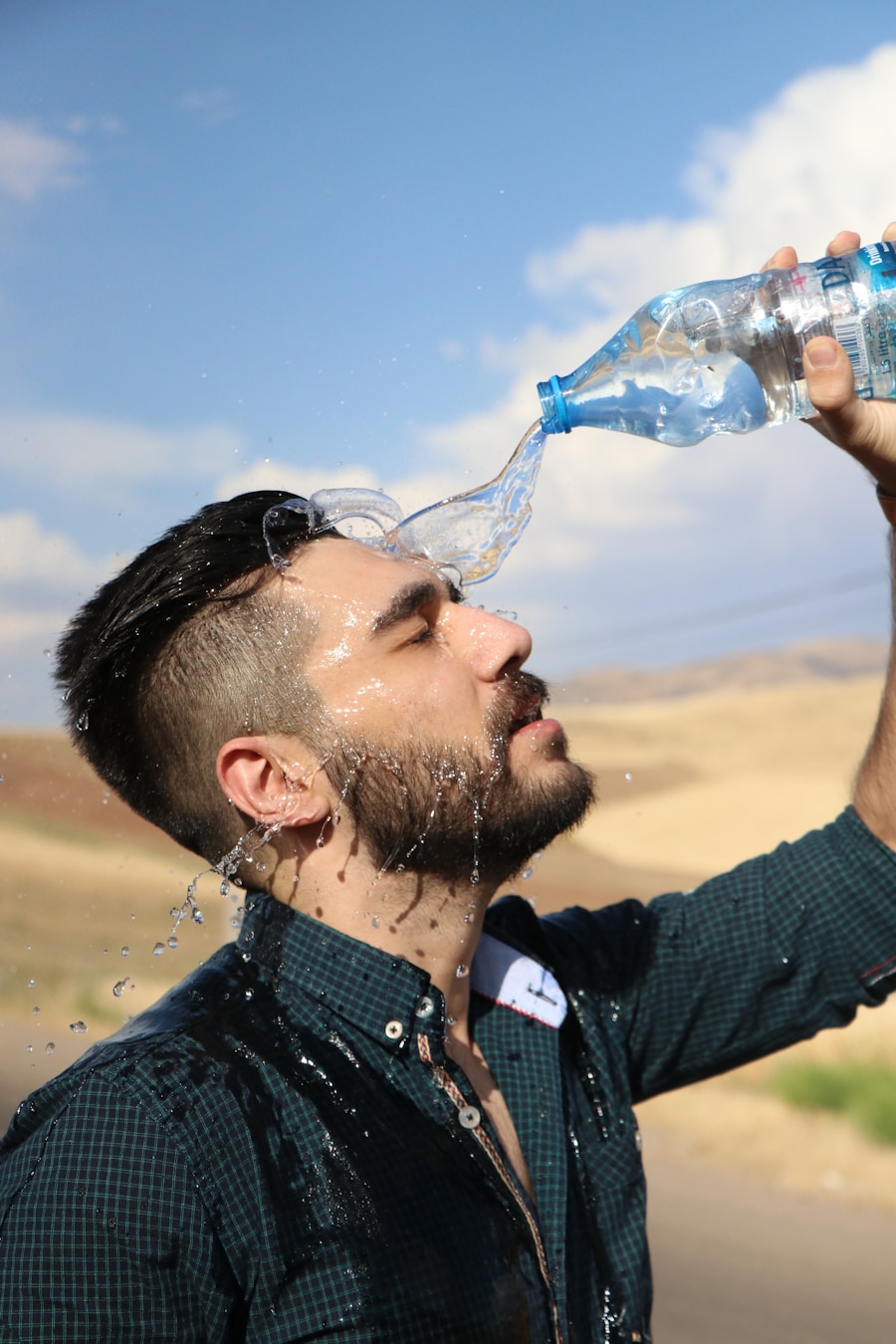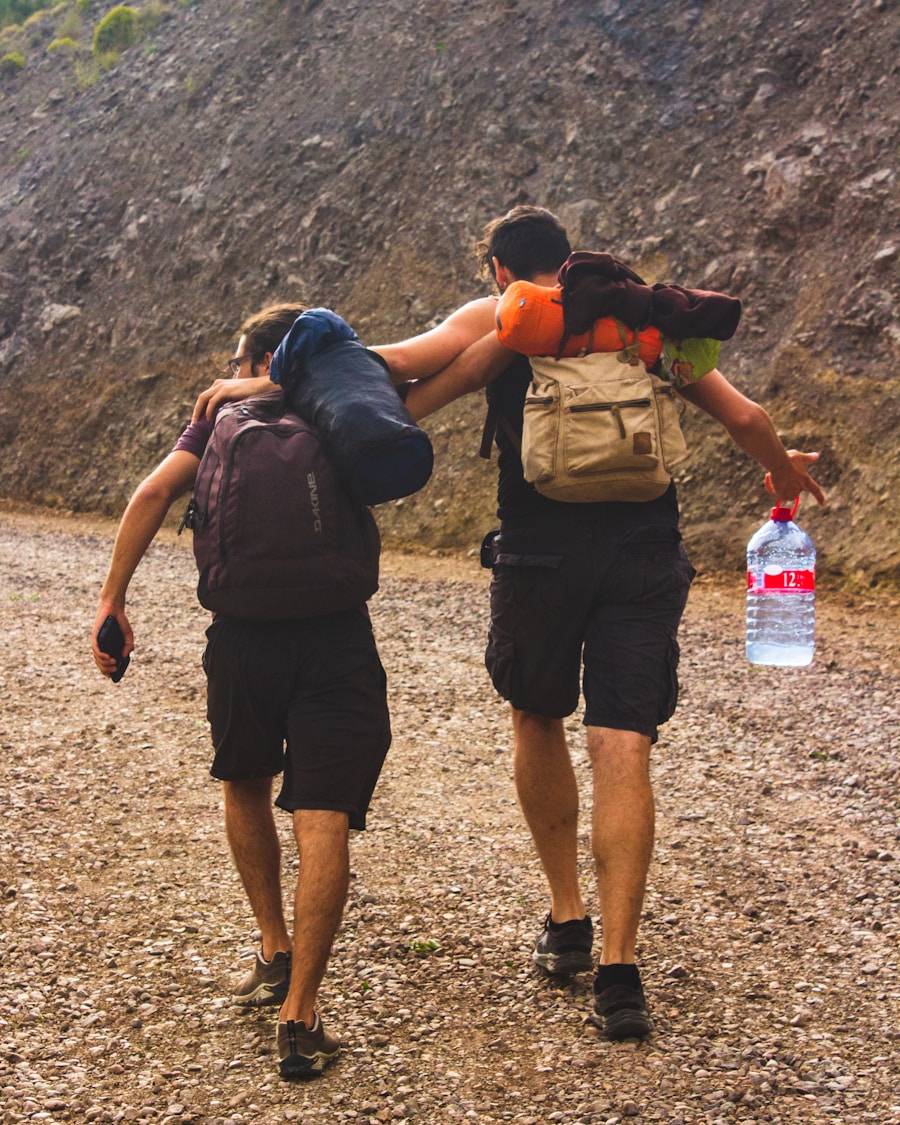Hydration is a fundamental aspect of human health and performance, particularly when engaging in physical activities such as hiking. Water is essential for maintaining bodily functions, including temperature regulation, nutrient transport, and waste elimination. When we hike, our bodies lose water through sweat and respiration, making it crucial to replenish these losses to avoid dehydration.
Dehydration can lead to a range of negative effects, from decreased physical performance and cognitive function to more severe health issues like heat exhaustion or heat stroke. Therefore, understanding the importance of hydration is vital for anyone who ventures into the great outdoors. Moreover, hydration plays a significant role in enhancing endurance and stamina during prolonged physical exertion.
Studies have shown that even mild dehydration can impair athletic performance, leading to fatigue, reduced coordination, and increased perceived effort. For hikers, this means that staying adequately hydrated can make the difference between an enjoyable trek and a grueling ordeal. Additionally, proper hydration supports joint lubrication and muscle function, which are critical for navigating uneven terrain and carrying heavy packs.
In essence, maintaining optimal hydration levels is not just about quenching thirst; it is about ensuring that the body operates efficiently and effectively throughout the hiking experience.
Key Takeaways
- Proper hydration is crucial for maintaining overall health and performance, especially during physical activities like hiking.
- Factors such as climate, altitude, intensity of activity, and individual differences can affect an individual’s water needs.
- Calculating water requirements involves considering factors like body weight, activity level, and environmental conditions.
- Tips for staying hydrated on the trail include drinking water regularly, using electrolyte supplements, and monitoring urine color.
- Water sources on the hiking trail can include natural sources like streams, rivers, and lakes, as well as man-made sources like water fountains and taps.
Factors Affecting Water Needs
Several factors influence an individual’s water needs while hiking, making it essential to consider personal circumstances when planning hydration strategies. One of the most significant factors is the intensity and duration of the hike. A strenuous hike that lasts several hours will naturally require more water than a leisurely stroll on flat terrain.
The level of physical exertion directly correlates with sweat production; thus, hikers should anticipate higher fluid requirements during challenging climbs or in hot weather conditions.
Environmental factors also play a crucial role in determining hydration needs. Temperature and humidity levels can significantly affect how much water a hiker loses through sweat.In hot and dry conditions, the body may lose fluids rapidly, necessitating more frequent hydration breaks. Conversely, cooler temperatures may reduce the perceived need for water, but hikers should remain vigilant as dehydration can still occur in these conditions. Altitude is another factor; as elevation increases, the air becomes thinner and drier, leading to increased respiratory water loss.
Hikers traversing high-altitude trails should be particularly mindful of their hydration status to counteract these effects.
Calculating Water Requirements

Calculating individual water requirements for hiking can be approached through various methods, but a common guideline is to consume approximately half a liter (about 17 ounces) of water per hour of moderate activity. This estimate can vary based on the factors previously discussed, such as temperature, humidity, and personal sweat rates. For instance, a hiker on a challenging trail in high heat may need to increase their intake to three-quarters of a liter or more per hour to stay adequately hydrated.
To personalize hydration needs further, hikers can conduct a simple test before embarking on their journey. Weighing oneself before and after a hike can provide insight into fluid loss through sweat. A weight loss of more than 2% of body weight indicates significant dehydration and suggests that the hiker should increase their water intake during future excursions.
Additionally, monitoring urine color can serve as a practical indicator of hydration status; pale yellow urine typically signifies adequate hydration, while dark yellow or amber indicates a need for more fluids.
Tips for Staying Hydrated on the Trail
| Hydration Tip | Description |
|---|---|
| Drink Water Regularly | Drink at least 8 ounces of water every 20-30 minutes while hiking. |
| Electrolyte Replacement | Consume electrolyte-rich drinks or snacks to replenish lost minerals through sweating. |
| Monitor Urine Color | Check the color of your urine to ensure you are adequately hydrated. Aim for pale yellow color. |
| Carry Sufficient Water | Carry at least 2 liters of water per person for a day hike, and more for longer hikes. |
| Hydration Pack | Consider using a hydration pack for easy access to water while on the trail. |
Staying hydrated on the trail requires proactive planning and awareness of one’s body signals. One effective strategy is to establish a hydration schedule before setting out on a hike. Setting reminders to drink water at regular intervals can help ensure that hikers do not wait until they feel thirsty to hydrate.
Thirst is often a late indicator of dehydration; therefore, adopting a routine of sipping water every 15 to 30 minutes can help maintain optimal hydration levels throughout the hike. In addition to timing, the type of fluids consumed can also impact hydration efficiency. While plain water is often sufficient for shorter hikes, longer treks may benefit from electrolyte-rich beverages that help replenish lost salts and minerals.
Sports drinks or electrolyte tablets can be particularly useful in hot weather or during strenuous activities when sweat loss is significant. Furthermore, incorporating hydrating foods into trail snacks—such as fruits like watermelon or oranges—can provide additional moisture and nutrients while satisfying hunger.
Water Sources on the Hiking Trail
Identifying potential water sources along hiking trails is crucial for planning hydration strategies effectively. Many trails pass by rivers, streams, lakes, or springs that can serve as natural water sources for hikers. However, it is essential to assess the safety and quality of these water sources before consumption.
Water from natural sources may contain pathogens or contaminants that could lead to gastrointestinal illnesses if ingested without proper treatment. To ensure safe drinking water from natural sources, hikers should consider using filtration systems or purification tablets designed for outdoor use. Portable water filters can effectively remove bacteria and protozoa from water while improving taste and clarity.
Boiling water for at least one minute is another reliable method for purifying water from natural sources. Hikers should also familiarize themselves with local regulations regarding water use in protected areas to avoid damaging ecosystems or violating park rules.
Dealing with Limited Water Availability

In some hiking scenarios, access to water may be limited or nonexistent, necessitating careful planning and resource management. When embarking on hikes in arid regions or remote areas where water sources are scarce, it becomes imperative to carry sufficient water supplies from the outset. This may involve calculating the total amount needed based on the hike’s duration and intensity while factoring in any potential emergencies.
In addition to carrying extra water, hikers should also develop strategies for conserving their supplies during the trek. This can include taking shorter sips rather than gulping down large amounts at once or avoiding excessive talking while hiking to minimize moisture loss through respiration. Additionally, hikers should be mindful of their activity levels; taking breaks in shaded areas can help reduce sweat production and lower overall fluid needs.
Hydration Gear and Accessories
The right gear can significantly enhance a hiker’s ability to stay hydrated on the trail. Hydration packs have gained popularity among outdoor enthusiasts due to their convenience and efficiency. These packs typically feature a built-in reservoir with a hose that allows hikers to sip water hands-free while on the move.
This design encourages regular hydration without interrupting the flow of the hike. In addition to hydration packs, portable water bottles are essential accessories for any hiker. Opting for lightweight and durable materials ensures that they can withstand rugged conditions while remaining easy to carry.
Some hikers prefer insulated bottles that keep water cool in hot weather or prevent freezing in colder climates. Furthermore, collapsible water containers are excellent options for those who need to save space when not in use; they can be filled at natural sources and easily stowed away when empty.
Hydration and Safety on the Hiking Trail
Hydration is not merely a matter of comfort; it is intrinsically linked to safety on the hiking trail. Dehydration can impair judgment and reaction times, increasing the risk of accidents or injuries while navigating challenging terrain. Additionally, heat-related illnesses such as heat exhaustion or heat stroke can occur when fluid intake does not keep pace with losses due to sweating in hot conditions.
Hikers should remain vigilant about recognizing early signs of dehydration, which may include symptoms such as dry mouth, fatigue, dizziness, or headache. If any of these symptoms arise during a hike, it is crucial to take immediate action by finding shade, resting, and consuming fluids promptly. In extreme cases where dehydration progresses to severe levels, symptoms may escalate to confusion or fainting—conditions that require urgent medical attention.
By prioritizing hydration and understanding its importance in relation to physical performance and safety, hikers can enhance their outdoor experiences while minimizing risks associated with dehydration. Whether through careful planning of water needs or utilizing appropriate gear and strategies on the trail, maintaining proper hydration is an essential component of successful hiking adventures.
When planning a hiking trip, it’s important to consider how much water to bring along to stay hydrated. According to a helpful article on TakeTravelInfo, the amount of water needed can vary depending on the length and intensity of the hike, as well as the weather conditions. It’s always better to bring more water than you think you’ll need to ensure you stay properly hydrated throughout your adventure.
FAQs
How much water should I bring when hiking?
It is recommended to bring at least 0.5 liters (17 ounces) of water per hour of hiking. However, the amount of water needed can vary depending on factors such as the intensity of the hike, weather conditions, and individual hydration needs.
What are the factors to consider when determining how much water to bring when hiking?
Factors to consider include the length and intensity of the hike, weather conditions, altitude, individual hydration needs, and access to water sources along the trail.
What are the risks of not bringing enough water when hiking?
Not bringing enough water when hiking can lead to dehydration, which can cause symptoms such as dizziness, fatigue, headaches, and in severe cases, heat stroke. Dehydration can also impair physical and cognitive performance, increasing the risk of accidents and injuries on the trail.
How can I ensure I have enough water for a hike?
To ensure you have enough water for a hike, calculate the amount of water needed based on the factors mentioned earlier, and then pack an adequate supply of water or plan to refill water bottles at designated water sources along the trail. It is also important to start the hike well-hydrated and to drink water regularly throughout the hike.
Are there any tips for staying hydrated while hiking?
Some tips for staying hydrated while hiking include drinking water before, during, and after the hike, using a hydration pack or water bottles with easy access, and consuming electrolyte-rich snacks or drinks to replenish lost minerals through sweating. It is also important to be mindful of the signs of dehydration and to take breaks as needed to rest and rehydrate.
